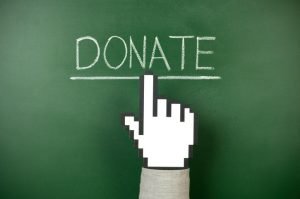It is funny how a couple of weeks can not only change the world but this column. When I was mulling over topics for my next Above the Law entry, I thought I wanted to discuss students at certain elite law schools protesting some Biglaw firms during recruitment dinners because of those firms representation of oil companies that are, rightly, seen as contributing to the existential global crisis known as climate change. While I hope to come back to that topic in the not too-distant future because it is important and interesting — though I am not exactly sure what my take would be on the subject, other than students should protest if they want while other students should attend the recruiting dinner if they want — a discussion of one existential global crisis has been overtaken by the need to discuss another existential global crisis. Whether you refer to it as the coronavirus, COVID-19, SARS-CoV-2, or some geographic nomenclature like “Wuhan Virus” because you are a terrible person, this global pandemic has fundamentally changed the lives of almost everyone in the United States and the rest of the world for at least the short-term, if not longer. Odds are that those reading this, be they lawyer, law student, or somewhere in-between, have been quarantined inside their own residence for a period of time with no real end in sight — an exception here might be for those Above the Law readers who reside in South Korea, kudos to you all for having a competent government. Those of you in the rest of the world have probably become an expert in Zoom and, depending on the number of small children also marooned in your residence, have either taken up several new hobbies, binged most of the offerings from the Peak TV era, wondered if there is a limit to the number of times you can read Isaac Chotiner vivisect Richard Epstein in The New Yorker (there is not), scoured the internet for news on the status of Above the Law founder and COVID-19 survivor David Lat, or have just tried to make it through each day with your sanity intact.
The abject chaos that COVID-19 has wreaked is not just limited to individuals. Entire industries have been turned on their heads. While not facing the cataclysm that has befallen the restaurant or retail industries, the legal industry has started to feel some of the effects. Stories of firms cutting salaries across the board, including partner draws, have started to trickle in, but one must assume it will quickly become a torrent. While many private firms have put themselves in better financial positions than they might have been prior to the Great Recession, there is no real way to cushion yourself for an economic climate in which 10 million Americans filed new unemployment claims over the past two weeks and where Q2 GDP could contract by 34%(!!!!). While the impact of COVID-19 will be felt throughout the legal profession, I want to talk about legal recruiting where seemingly totemic pillars of how law students get jobs and how legal employers attract new talent have been completely upended over the span of several weeks.
First and foremost, while I have some ideas about how this might play out, it is important to realize that no one can speak with any sort of definitiveness, and anyone who claims they know exactly what will happen with legal recruiting over the next several weeks and months is lying.

The legal industry has dealt with economic downturns. It has faced once-in-a-generation financial crises. A once-a-century global pandemic and resulting economic calamity? That’s uncharted territory. But the fine folks at Breaking Media do not pay me the big bucks to write a column that is one giant shrug emoji, so how might the fallout from COVID-19 impact legal recruiting? I think the best way to approach the question is by looking at various classes of law student.
For current 3Ls, the Class of 2020, if you already have a job, as of now you should expect to start that job this fall. While firms have been cutting salaries and furloughing nonattorney staff, there have not yet been the deep cuts to attorney ranks that were seen during 2008-09. What is unclear is how long this COVID-induced economic recession/depression will extend and what the recovery will look like. If we can all emerge from our national house arrest in the next month or so and the ensuing economic recovery looks like the letter V, then attorney levels can likely stay stable. If we are in our caves for an extended period of time or if the recovery takes on more of a U or, even worse, an L shape, then cuts are likely. One of the many benefits of having a site like Above the Law in the legal blogosphere is that no firm wants to be the first to announce cuts to an incoming associate class and be engulfed by the public relations firestorm that would follow.
For those in the Class of 2020 who are still looking for employment, that quest is probably going to take longer than it might have. While private sector employers are not yet shedding attorneys in vast numbers, there is definitely not a strong appetite to bring on new hires, with some notable exceptions. Any 3L looking for post-graduate work should be expanding their search to governmental opportunities as well as clerkships, be it at the federal or state level. These paths can serve as potential havens whose opportunities are not as tied to the broader economic reality.
The other substantial issue facing the Class of 2020 is, regardless of your job status, actually becoming an attorney by taking, and passing, a state bar exam. As of this writing, four states have announced the July exam has been “postponed” to the fall. Tennessee announced an interesting approach in which applications for the July exam will still be taken but can be transferred to either a fall exam or the February 2021 sitting. In addition, test takers will be able to practice under the supervision of a barred attorney for a longer period of time pending exam results. This makes sense at a time in which facilities large enough to serve as bar exam locations are uniquely suited to serve as field hospitals, see, e.g., New York City’s Javits Center. Most other jurisdictions will likely follow suit and postpone their July exam. The key word there is “postpone” rather than cancel. As of now, graduates will not have to wait until February 2021 to take a bar exam, though that could obviously change four times over the next 48 hours. For graduating students who are already employed, a delay of a couple of months will likely not have that much of an impact. However, for students looking for a job with smaller private firms that typically only hire after bar passage, such a delay could be significant. For this reason, along with the simple fact that the bar exam is a completely unpleasant experience that bears no relation to an applicant’s ability to be a successful lawyer, students across the country should be clamoring for the diploma privilege currently enjoyed by those who graduate from Wisconsin-based law schools, allowing them to practice without taking a bar exam. However, much like we need bold thinking from our government in tackling our present economic calamity, 3Ls should also think boldly when it comes to the diploma privledge. Do not just limit it to students who went to school in a particular state, but rather, any student who graduated from ANY ABA-accredited law school should be admitted to practice. Perhaps with an online state law exam for those who went to an out-of-state school, though to be frank, especially for those students at the nation’s top schools, the amount of state law you learn in law school is limited at best.
Thankfully, current 2Ls, the Class of 2021, have another year-plus before they have to worry about the bar exam; unfortunately, however, this class might well be the one facing the largest COVID-19 impact. For those with summer associate plans already in place, there is no sign yet that those opportunities are disappearing in large numbers. Much like no firm wants to be known for being the first to lay off a number of incoming associates, no Am Law 50 firm wants to be known for killing off its entire summer class. Plus, even in extraordinarily lean economic times, Biglaw firms will still need new associates in Fall 2021. That being said, there will likely be significant changes to the summer associate experience. The grandiosity in recent years that had started to approach pre-Great Recession levels is likely gone. Think fewer three-star restaurant lunches and more brown bag “lunch and learn” opportunities. The length of the summer program will likely also be pared back or shifted to remote work for at least the beginning, if not a significant portion, of the season. Pay is also likely to be impacted. While summer associates benefit when firms raise associate salaries, they are likely going to feel the impact of a salary cut as well.
Perhaps most important is the question of how the macroeconomic climate will impact postgraduate offers. As the NALP chart below indicates, offer rates from summer programs have reached historic highs in recent years.

(Chart via NALP)
A massive contraction of demand for legal services likely means these numbers will fall. The hope is that they do not reach Summer 2009 levels. Given the extent to which legal employers have prepared themselves in recent years for what was seen as an inevitable economic downturn, such a limited impact is possible. But it is worth recognizing that even in the summer of 2009 offer rates didn’t fall to 0%, but rather to 69%. While that’s a long way from the mid-to-high 90s, it still means that well over a majority of those with summer associate positions landed a position for after graduation.
That leaves us with the 1Ls, the Class of 2022. This is where things get a bit weird. At most law schools, 1Ls are joining their 2L and 3L classmates in a pass/fail grading system for the Spring 2020 semester. But while this might just mean a slightly more relaxed exam period for upperclass students, it completely wreaks havoc on the recruiting timeline for the Class of 2022. While 1L summer hiring has picked up in recent years, by and large, most legal employers are not keen on making long-term hiring decisions based on one semester’s worth of grades and another semester that is a collection of Passes. Thus the seemingly sacrosanct fall recruiting cycle is seeing a shift. Columbia and Harvard were among the first to move their 2L recruiting to Winter 2021, and most elite law schools, including Vanderbilt, have announced a similar move. Any remaining holdouts will likewise shift their calendar — rest easy antitrust warriors, there has been no coordination, or even guidance, from any governing entity, nor collusion among law schools. Ironically, having the 2L hiring cycle take place after three semesters, rather than two, is objectively better for both law students and legal employers, but the inertia of the existing system has been too much to overcome, until now. Does this new hiring timeline mean that current 1Ls can take the summer off from job-related concerns? Probably not. What I envision happening is a more pronounced version of what has been the case in recent years. While employers are going to want two semesters of grades from most students, exceptions will be made for the top of the class at the nation’s elite law schools. Thus a two-tiered system unfolds wherein employers, particularly Biglaw, use the summer to engage in a mad dash to snap up the most-coveted students (think the law review staff at the top 20 schools) while Winter 2L OCI becomes a battle among students hewing closer to the median for a smaller number of summer slots.
What about 0Ls, those set to attend law school or even just thinking about it? The bad news is that no one has any idea when this will all come to an end. Are we going to be stuck inside until there is a viable vaccine? Would that be 2020 or 2021? March saw the largest single-month increase in American unemployment since January 1975, and that only accounts for a fraction of the above referenced 10 million unemployment claims. But there is good news. Before COVID-19 decended on the United States, the legal economy was the strongest it had been in recent memory, if not ever. And unlike the Great Recession, an underlying rot in the broader economy is not coming to the fore. This contraction is strictly caused by the fact it is hard to have a robust economy when everyone is stuck inside. Once our front doors reopen, legal hiring should rapidly pick up. Plus, law school remains one of the great countercyclical destinations for recent college graduates.
Living in the time of COVID-19 is quite the juxtaposition. While sheltering in place, days can move exceeding slowly and even blur together, but the pace of the news and global developments is exceedingly quick. This rapid change is also evident in the realm of legal recruiting. What seemed impossible at the beginning of the month is now widely accepted. It’s entirely possible, if not likely, that everything I have set forth above will look foolishly out of date come the summer, but at least for now, it is a look at how COVID-19 will change legal recruiting in the present, and possibly the future.
Nicholas Alexiou is the Director of LL.M. and Alumni Advising as well as the Associate Director of Career Services at Vanderbilt University Law School. He will, hopefully, respond to your emails at abovethelawcso@gmail.com.
 Jill Switzer has been an active member of the State Bar of California for over 40 years. She remembers practicing law in a kinder, gentler time. She’s had a diverse legal career, including stints as a deputy district attorney, a solo practice, and several senior in-house gigs. She now mediates full-time, which gives her the opportunity to see dinosaurs, millennials, and those in-between interact — it’s not always civil. You can reach her by email at oldladylawyer@gmail.com.
Jill Switzer has been an active member of the State Bar of California for over 40 years. She remembers practicing law in a kinder, gentler time. She’s had a diverse legal career, including stints as a deputy district attorney, a solo practice, and several senior in-house gigs. She now mediates full-time, which gives her the opportunity to see dinosaurs, millennials, and those in-between interact — it’s not always civil. You can reach her by email at oldladylawyer@gmail.com.




 Kathryn Rubino is a Senior Editor at Above the Law, and host of
Kathryn Rubino is a Senior Editor at Above the Law, and host of 











